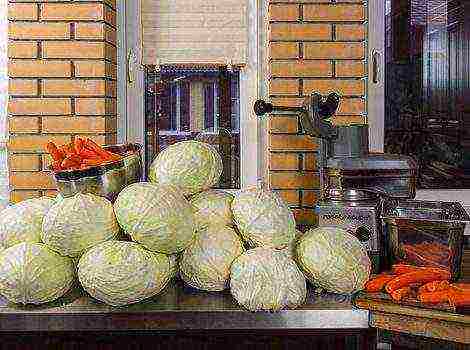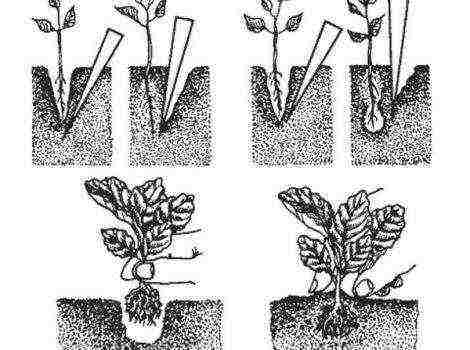Content
5 options for how to make a support for peas with your own hands
The mistake of many gardeners is growing peas without tying them to a support. This significantly reduces yields and complicates plant care. Trellis for a pea bed is not difficult to make with your own hands without significant cash spending.
Why do you need a support for peas
Peas are a plant with a lodging stem reaching a height of 45 cm to 250 cm. To fully develop and rise up to the light, the stems need to cling to the support. There are also standard types of culture that do not need support. But undersized plants only benefit from tying up.
When the peas outgrow 20-30 cm, the stems gradually lodge on the ground. Areas of bushes adjacent to the ground begin to rot and become affected by diseases. Dampness and darkening are formed under the plants - the best conditions for snails and slugs.
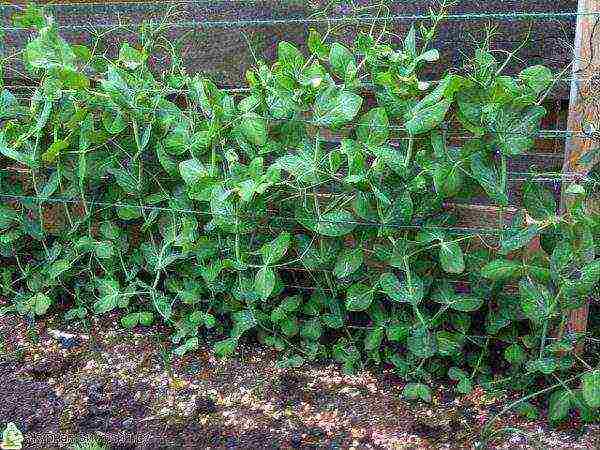
Lying green mass covers the pods. With a lack of light, the beans ripen unevenly, do not accumulate useful substances and sugars to the proper extent. Such peas lose their taste and sweetness.
It is difficult for growers to control the ripening of the pods. Overripe beans take up most of the plant's nutrients. The bushes begin to dry even under favorable growth conditions.
It is difficult to spray fallen plants with preventive solutions, covering all parts of the bushes. Culture is more often affected by bruchus, which is capable of destroying the entire crop. Beans damaged by the pest are toxic and cannot be used for food or for sowing.
The advantage of supports for small garden areas is the verticality of the beds. This saves usable floor space. With a successful selection of support, the pea bed becomes an element of the site's decor, covers unsightly buildings or fences.
How to do it yourself
There are many options for pea props. To choose the type of trellis, they are guided by the features of the site, the place of the garden and the desired decorative effect.
It is advisable to install the support before planting the legume, marking the place of sowing the beans. Installation work after emergence can damage the roots and stems of the plant.
Support stakes
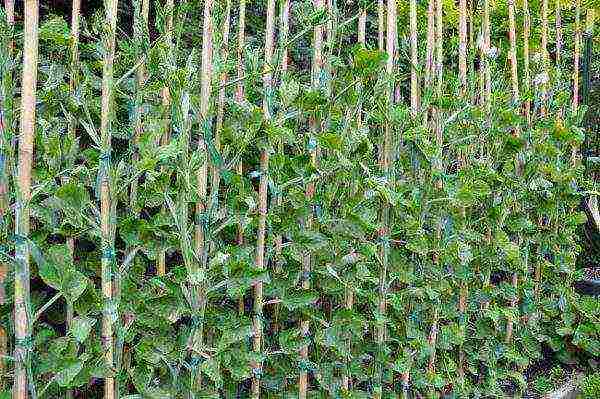
The easiest option for garter peas, where stakes driven into the ground play the role of a stand. For this, reinforcing rods, wooden stakes, bamboo sticks, branches of fruit trees 1.5-2 m long are used. The stakes are buried in the ground at intervals 50 cm between two beds.
Wigwam
A good support option when you need to save space and add decorative effect to the empty space between vegetable beds.
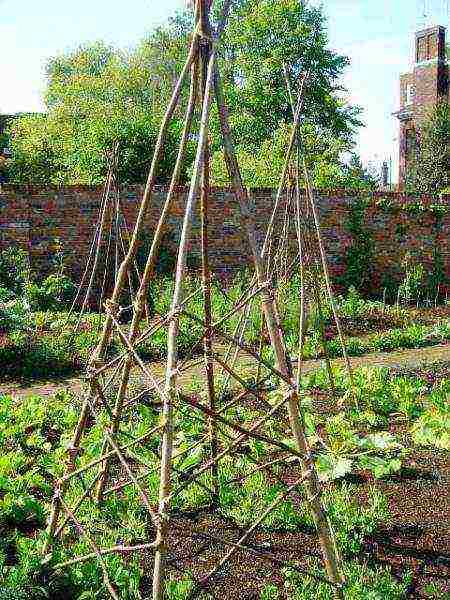
To begin with, a main pole with a height of 2 m is installed. In a circle in the distance 0,7 m poles are driven in at a slope 60° and in the upper part are fixed with a knitting wire or a clamp to the main pole. The peas are planted on both sides of the tilted poles.
The trellis can be constructed from reinforcing rods, wooden beams and tree branches. Tight wire, twine, or twine can be used instead of tilted poles.
Portable trellis
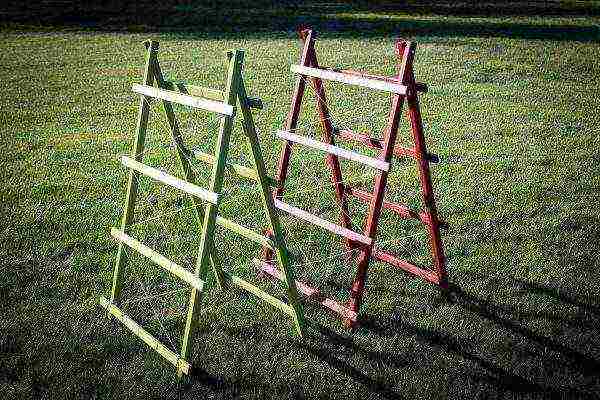
To comply with agricultural practices peas are planted in one place only two years in a row... Therefore, gardeners have to constantly build trellises in a new location. This version of the tapestry is mobile.It can be carried, rotated in different angles and put away in storage for a while.
To install the trellis you will need:
- three transverse beams along the length of the bed;
- two beams (1 m) for side mountings;
- four beams (1.6-2 m) for vertical posts;
- twine or cord;
- screws and screwdriver.
The screws are used to fasten the base of the structure: transverse and side beams. Vertical racks connected at the top are attached to it from the outside under a slope. Another transverse beam is attached at the top. The twine is pulled every 30 cm, passing through the upper cross bar and tying on the base of the structure.
Support on the grid
An easy-to-install version of the trellis is a structure with a metal or plastic netting. It can be purchased at a hardware store or garden store. For tying peas, choose a net with a width 1,6 — 2 m.
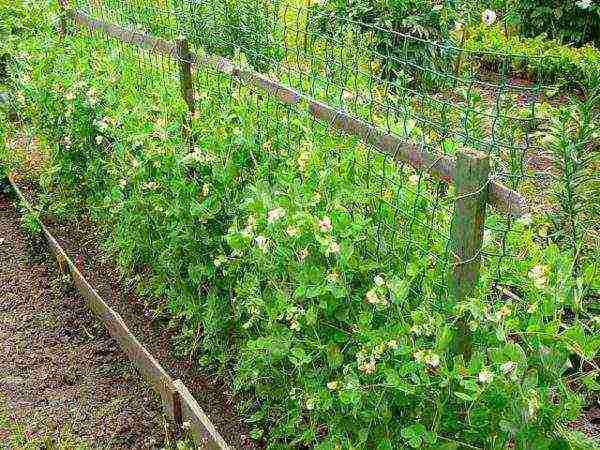
To fix the mesh, two support pillars are driven into the ground. The end of the net is attached to the support post with knitting wire or clamps. Then the roll is pulled up to the second pillar and secured in the same way. Peas are sown on both sides of the net.
When a pea bed is planned along a fence or structure, the grid is installed at an angle. 60°.It is only important to take into account the illumination of the plants; the garden should not be planned along the fence along the southern side of the site.
Bicycle rim trellis
This is an original type of support, which will decorate the site and save usable space. To mount it, you will need two bicycle rims, a 2.2 m long reinforcing bar, wire and twine (cord).
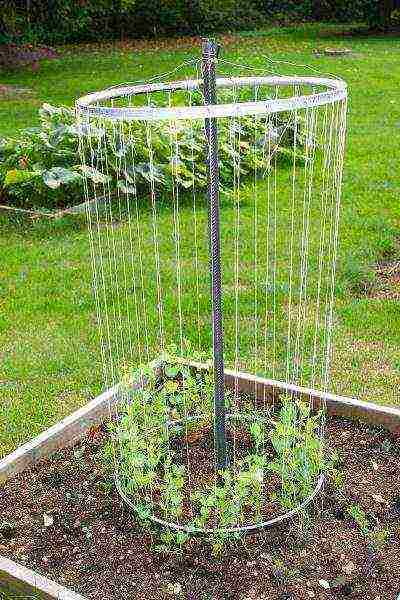
Step-by-step instruction:
- form a bed 20 cm wider than the rim;
- a reinforcing bar is installed in its center;
- spokes are unscrewed from the rims;
- one rim is threaded through the rod and laid on the ground;
- the second rim is attached at the top of the rod with wire, passing it through the holes for the knitting needles;
- the cord is cut into pieces 2 times the height of the rod;
- one end of the cord is threaded into the holes of the lower rim, the second is passed through the holes of the upper rim and tied at the bottom;
- up to 30 holes are pierced with a cord.
Peas are sown in a circle on the outside and inside of the structure.
Pea trellis option best when planning your annual plantings. This way you can achieve the maximum decorative effect of the site and avoid unwanted neighborhood with other plants.
